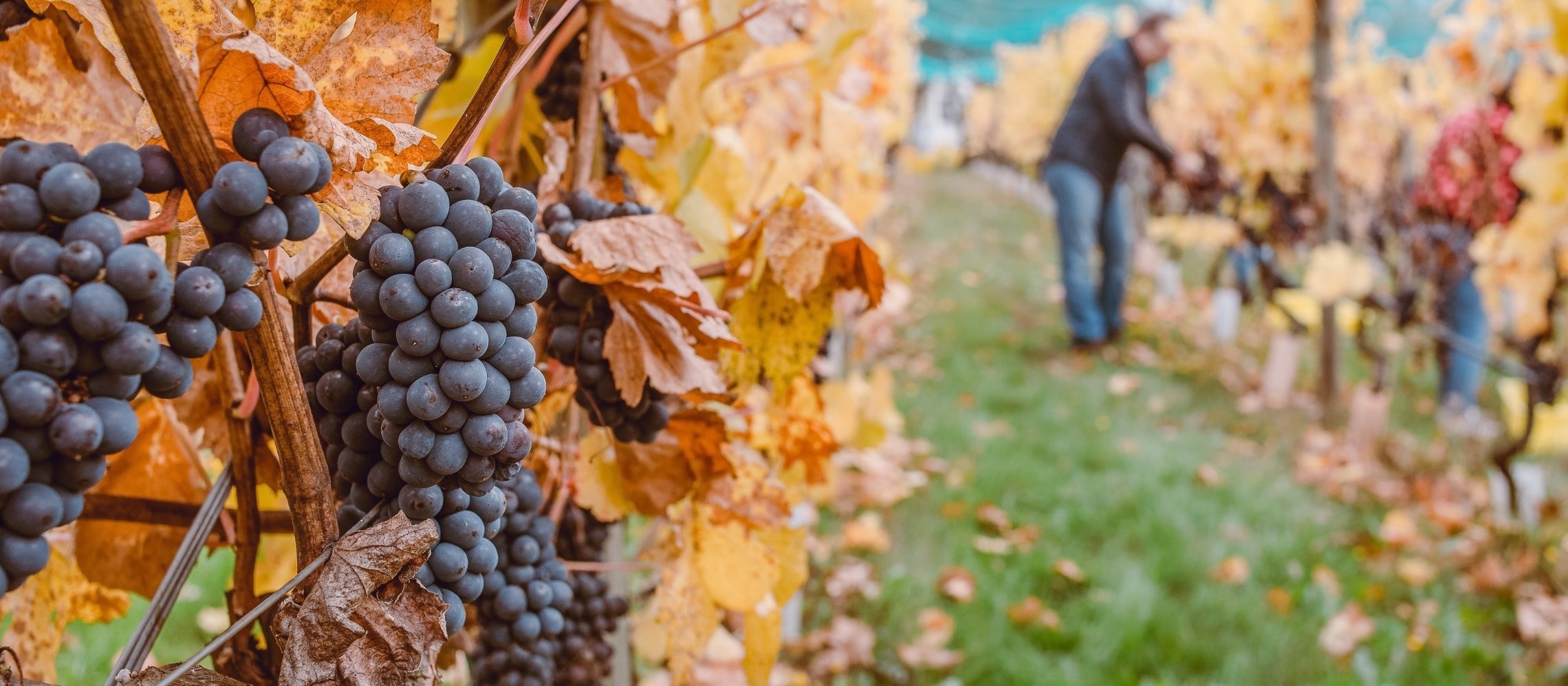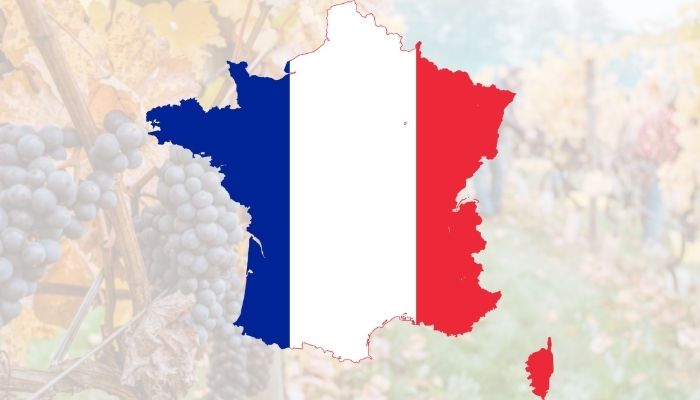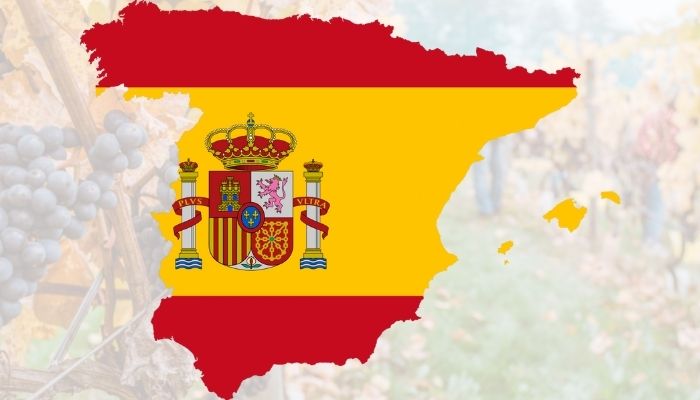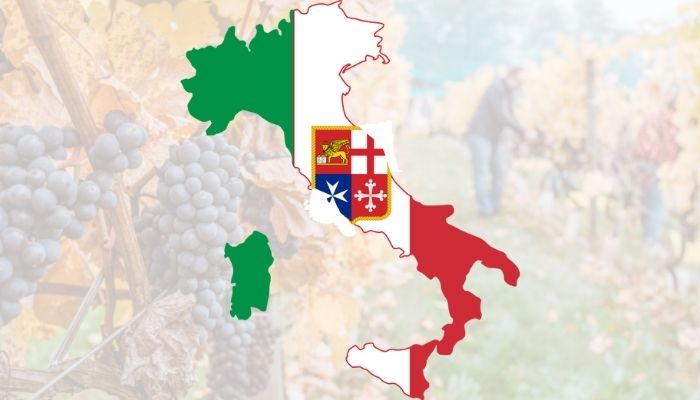Early Bird Deadline
30 November 2025
Judging
Date
23 & 24 March 2026
Winners Announcement
22 April 2026
30 November 2025
23 & 24 March 2026
22 April 2026

If COVID was not enough of an insult, climate change hit the Western European wine-growing powerhouses in a big way in 2021. The European wine industry has already had its share of challenges over the past few years, which had produced some smaller harvests after suffering weather issues. But nothing could have prepared them for what was coming this year.

Flag map of France
After several difficult years with diminished volumes due to poor weather, France’s 2021 harvest will be the smallest the country’s producers have seen in decades. The Ministry of Agriculture calls 2021 harvest the “worst ever” with “historically low” yields. Julien Denormandie, France’s agriculture minister, has called the effect of the devastating weather events “probably the greatest agricultural catastrophe of the beginning of the 21st century.”
Across the country, the terrible weather conditions greatly affected the vines, with Bordeaux, Loire, Bourgogne, the Rhône, Southwest, and Champagne experiencing the worst conditions. Coming on top of the COVID pandemic and the tariffs imposed by the Trump administration, many producers were already struggling. In Bordeaux, it is predicted that 10% of the producers will go out of business due to the very small harvest.
It began with an unusually hot March that scorched the vines and caused the nascent grapes to appear earlier than usual. This unusual event was followed by one of the worst and most widespread frosts ever to hit the French vineyards. Since the grapes were already present and developing due to the late winter heat, the frost killed the grapes. When the frost hit on April 5th, some in the French wine business predicted that the entire harvest might be lost.
[[relatedPurchasesItems-44]]
Some parts of the Loire had 13 continuous days of frost. In several regions, producers lit “crop candles” in the vineyards (large containers of burning paraffin) in the vineyards to attempt to warm the vines at night, a common practice in northern vineyards like Chablis but not in more southern vineyards. Later in the season, wet weather led to the development of mildew in many regions, eliminating even more grapes. Usually, vines need a period of hot, dry weather near harvest time to produce a good vintage.
In the end, depending on the region, an average of 24% to 30% of the yield for 2021 was lost. Some of the worst damage was in Bourgogne, where Chablis lost 80% of their yield and Pouilly-Fuissé lost 90%. Not even the southern vineyards were spared. 80% of the Southwest region’s harvest was affected; Provence and the Languedoc saw killing frost that caused extensive damage except for those vineyards closest to the Mediterranean; the Rhône had a loss of 30% to 40% due to the frost scattered throughout the region.
In Bordeaux, many of the main appellations, particularly in the southern and eastern parts of the region, lost approximately 30% of their harvest. The Médoc, which lies along the Gironde Estuary and generally has more temperate weather, was relatively untouched.
Producers in Champagne always keep reserve wines from previous years to compensate for difficult years like 2021. This fact will help them continue to supply champagne in close-to-usual amounts. Even so, they experienced the same April frost and heavy summer rain that caused mildew. One of the few untouched vineyards, Alsace, may see an increase in sales due to the misfortunes of the other French wine regions.

Flag map of Spain
Spanish producers were certainly luckier this year than their French counterparts. Spain is no stranger to weather challenges, and often has had to deal with storms of large hail, wildfires and extreme heat that affect the vineyards. In 2021, Spain’s mostly escaped the widespread weather catastrophes that plagued vineyards farther to the north and east.
Spain did experience widespread frost, but it happened in January, before the vegetative cycle of the vines began. Still, some plants were damaged in the mid-Iberian Peninsula. Hail hit the Ribera del Duero in the Spring and Summer, causing further damage. The season was mostly dry, so cryptogamic diseases like mildew were not a problem. Still, the Spanish Observatory of Wine Markets (OeMv) is predicting a “medium-low” yield this year but of generally good quality, after a plentiful harvest in 2020. Spanish producers expect to benefit from the 30% lower yield in France that should create more demand for Spanish wines.
As in other countries, rising temperatures caused by climate change are a blessing and a curse. In the short term, northern vineyards like Rioja are benefiting from the heat, leading to riper, better-quality grapes and more complex, long-lived wines. Winemakers do see the other side of the coin, though, in the long run. As temperatures continue to rise, it will become more difficult to make great, balanced wines in the more southerly vineyards, a phenomenon that is already happening in France’s meridional vineyards.

Flag map of Italy
The April frost that hit France so hard also affected the Italian vineyards, particularly in the northern vineyards like Piedmont and Veneto. In the south, extreme heat, drought and wildfires scorched the vineyards, further lowering the yield. Unfortunately, it will be very hard to find a 2021 Barolo or 2021 Valpolicella Amarone in the future. Overall, according to the Unione Italiana Vini, and the ISMEA agricultural institute, the 2021 yield of Italian wine will be reduced by 9%.
Once again, in Italy, there are advantages and disadvantages of the warmer temperatures due to climate change. Italian winemakers are trying to shed the best possible light on the situation, stating that warmer temperatures lead to fewer grapes, but of better quality. Viticultural professionals take a longer view and are not pleased with the effects of warmer temperatures. The harvest is being pushed forward by days or even weeks, particularly in the warmest areas of central and southern Italy. The shorter growing season produces grapes with too much sugar and less phenolic ripeness. The result is wines that have too much alcohol and fruit and less complexity and longevity.
In all three countries, producers are looking for ways to mitigate the effects of climate change, particularly warming temperatures. One step they are taking is planting at higher altitudes that have fresher temperatures. Another is planting blending grapes to offset the higher levels of sugar and therefore alcohol so they can produce more balanced wines. For example, in Bordeaux, six new grape varieties have been authorized to be used exactly for this purpose.
Show your wines where it matters. Get your products tasted by top sommeliers, buyers and experts at the London Competitions — enter now.